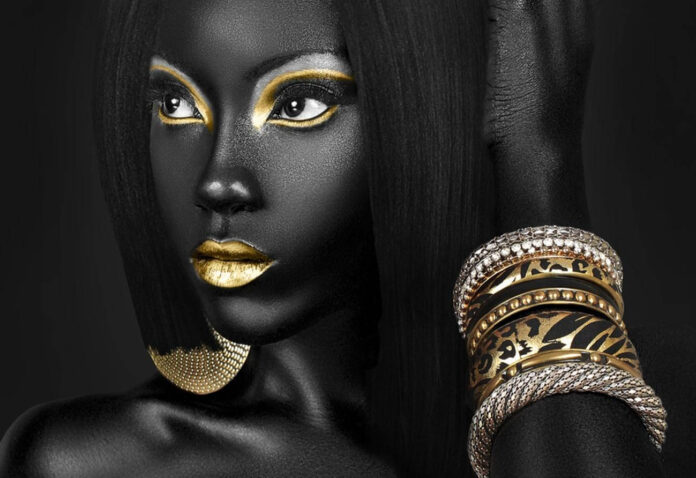Introduction
The phrase “Blackest Person in the World” often sparks curiosity, admiration, and dialogue around colorism, identity, and representation. While the term itself can be interpreted in multiple ways—biologically, socially, or culturally—it most often refers to individuals with extremely high levels of melanin, the pigment responsible for skin color. This article delves into the science of skin color, showcases individuals who have captured global attention for their stunningly dark complexions, and explores the broader implications for race, identity, and beauty.
Understanding Melanin: The Science of Skin Color
Melanin is the pigment that determines the color of human skin, hair, and eyes. It is produced by cells known as melanocytes. There are two main types of melanin: eumelanin (black or brown) and pheomelanin (red or yellow). The amount and type of melanin in an individual’s skin are largely determined by genetics and evolutionary adaptation to ultraviolet (UV) radiation from the sun.
People with higher melanin levels—typically found in equatorial regions such as sub-Saharan Africa—have darker skin, which provides protection against the sun’s harmful UV rays. This evolutionary trait has had profound implications, not just for biology, but also for how societies perceive and assign value to skin tone.
Nyakim Gatwech: The Face of Deep Melanin Beauty
When discussing the “blackest person in the world,” the name Nyakim Gatwech often emerges. Born in Ethiopia to South Sudanese parents and raised in the United States, Nyakim is a model who gained international recognition for her deeply pigmented skin. Her unique look has earned her the nickname “Queen of the Dark,” and her photos have gone viral countless times for their arresting beauty and unapologetic embrace of her complexion.
Nyakim has become an advocate for self-love and has used her platform to challenge the Eurocentric beauty standards that often marginalize darker-skinned individuals. In interviews, she has shared stories of being asked whether she would bleach her skin—a practice common in many parts of the world due to entrenched colorism—and proudly rejecting those suggestions. Her response underscores a broader cultural shift towards embracing diversity in all its forms.
South Sudan and the Dinka People
South Sudan, the birthplace of many individuals noted for their deep pigmentation, is home to ethnic groups such as the Dinka and Nuer. The Dinka, in particular, are often cited as having some of the darkest skin tones in the world. Their deep melanin levels are a natural adaptation to their geographic environment, where intense sun exposure is a constant.
But skin color in South Sudan is not just a biological trait; it is woven into cultural identity. Many Dinka people take pride in their appearance and consider their rich complexion a sign of beauty, strength, and resilience. This pride is a stark contrast to the negative perceptions of dark skin that persist in other parts of the world.
Colorism: The Global Challenge
While individuals like Nyakim Gatwech have made headlines and are changing the narrative, colorism—prejudice or discrimination against individuals with a dark skin tone, typically among people of the same ethnic or racial group—remains a pervasive problem.
In countries like India, the Philippines, and many African nations, lighter skin is still often equated with beauty, wealth, and higher social status. This has given rise to a multi-billion-dollar skin-lightening industry. Sadly, the internalized preference for lighter skin has led many to undergo harmful treatments, all in pursuit of an ideal rooted in colonialism and media influence.
Highlighting and celebrating the darkest skin tones challenges these narratives. It brings to the forefront a broader dialogue about representation, equality, and the need to dismantle centuries-old beauty standards that continue to cause psychological and physical harm.
Representation in Media and Fashion
The media and fashion industries are key battlegrounds in the fight for representation. For decades, models with darker skin were often relegated to the margins, while lighter-skinned individuals dominated magazine covers, runways, and advertising campaigns. This exclusion was not just about color—it signaled who was deemed beautiful, desirable, and worthy of visibility.
The rise of models like Alek Wek (also South Sudanese) in the late 1990s, and more recently Nyakim Gatwech and Khoudia Diop (a Senegalese model also known for her dark skin), has opened doors. These women not only break barriers in fashion but also serve as icons for younger generations struggling with self-image and identity.
Social Media’s Role in Empowerment
One of the most transformative tools in reshaping beauty standards has been social media. Platforms like Instagram and TikTok have democratized visibility, allowing individuals to share their own stories, images, and truths without relying on traditional gatekeepers. Nyakim Gatwech, for example, has used her social media presence to promote self-acceptance and challenge stereotypes.
Under hashtags like #MelaninMagic and #BlackIsBeautiful, people around the world share photos and stories celebrating deep melanin, encouraging a global conversation about pride and identity. Social media is not just a mirror of society—it’s an engine for change.
Psychological Impact of Beauty Standards
The importance of celebrating individuals with extremely dark skin goes beyond aesthetics. It touches on mental health, especially among youth. Studies have shown that colorism can lead to lower self-esteem, depression, and a diminished sense of identity. When dark skin is associated with negativity or inferiority, it can have long-term effects on how individuals see themselves and their place in society.
Representation matters because it affirms identity. When children see people who look like them celebrated in media, art, and leadership, it fosters a sense of belonging and possibility. The celebration of dark skin as beautiful is not about elevating one group over another—it’s about correcting a historical imbalance and promoting inclusivity.
Conclusion: Beyond the Surface
The idea of the “blackest person in the world” may begin with fascination over skin tone, but it quickly opens the door to deeper questions about race, identity, beauty, and humanity. Individuals like Nyakim Gatwech remind us that beauty is not confined to Eurocentric ideals, and that self-love in the face of societal pressure is a powerful act of resistance.
As conversations about representation and equity continue to evolve, the celebration of deep melanin serves as both a cultural reclamation and a call for greater inclusivity. It invites us to appreciate the full spectrum of human beauty—not as a hierarchy, but as a harmonious mosaic where every shade is honored.


